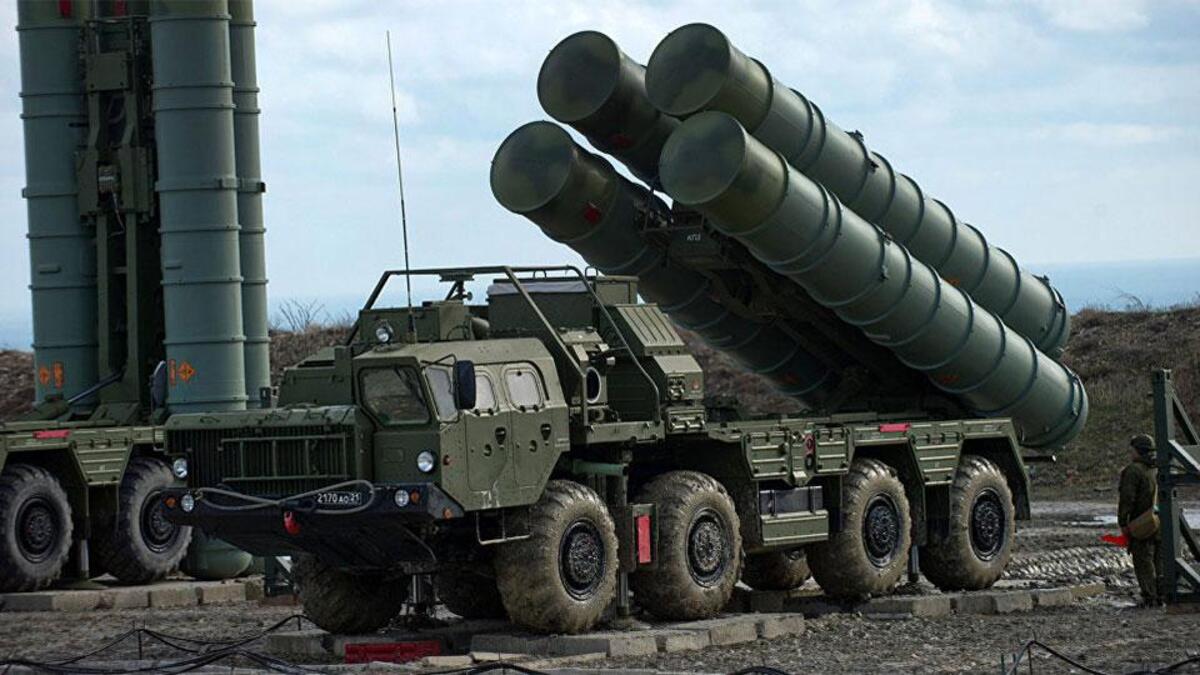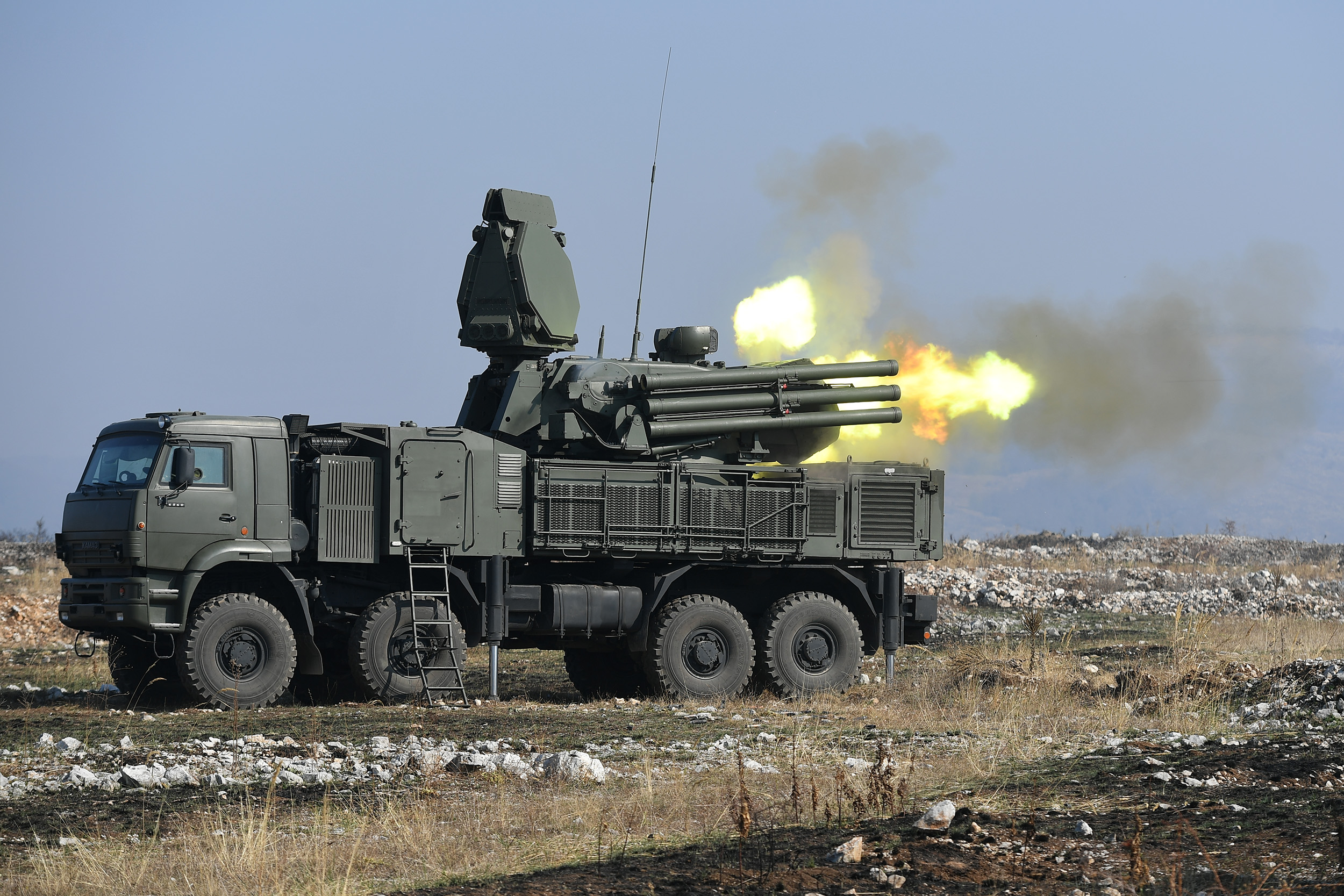The Pantsir short-range missile system, one of the key components of Russia’s air defense arsenal, is being showcased at the ongoing multinational military drills, Zapad 2021.
‘Deal Of The Century’: Why Tata-Airbus Joint Venture Could Pave Way For India To Become A Global Aerospace Hub
Belarusian President Alexander Lukashenko recently said that the country may need Russia’s advanced defense equipment, including S-400 surface-to-air missile to protect its land from enemies.
Russian news agency TASS has quoted Lukashenko as saying, “We will equip ourselves with S-400s. If we see during the exercise [Zapad-2021] that we need something else, then we will buy it from the Russian Federation and commission it.”
The same agency further quoted Belarusian Chief of Staff Andrey Gurtsevich as saying that pre-contract work was underway on the procurement of the Pantsir-S and S-400 air defense systems.

Russia Activates Missiles
The crews of the S-400 SAM, Pantsir-S anti-aircraft missile, cannon systems, and radar stations took up combat duty to repel an air attack within the framework of the Zapad-2021 strategic exercises of the Russian and Belarusian Armed Forces, according to the Russian Defense Ministry.
“To repel an air attack on the Western Military District, the crews of the S-400 and Pantsir-S anti-aircraft missile systems took over the combat duty, noted the Russian military department.
The Pantsir air defense system includes anti-aircraft guns and missiles to intercept tactical aircraft, precision-guided munitions (PGMs), and unmanned aerial vehicles (UAVs). Using its solid-state search radar, the Pantsir can track up to 20 tactical aircraft-sized targets at a range of 32-36 km.
After detection, the system can select targets with its high-frequency engagement radar or optional thermal imaging sensor. Although each Pantsir launch vehicle is capable of functioning independently, the system typically operates in batteries of six launcher vehicles, which are occasionally accompanied by a separate command and control vehicle.
The S-400 Triumf, widely regarded as one of the world’s best surface-to-air defense systems, entered service in April 2007 and was deployed in combat after a few months. While China and Turkey are already in possession of S-400, India is set to receive the SAM system from Russia by the end of this year.
Belarus Deal
However, the S-400 deal with Belarus has witnessed some financial constraints from the buyer side as Janes quoted the Belarusian president as saying that, Russian President Vladimir Putin may “approve the sale of S-400 with the money left over from a loan previously approved by Moscow to fund the building of a nuclear plant”.
In his press conference held on September 9, Putin said that efforts are being made to form a common defense space with Belarus. “Today, we discussed issues related to forming a common defense space and ensuring security along our borders.”
Belarus is hoping to procure more defense equipment after Zapad-21 as it wants to see if Russia is going to reveal more advanced weapons for combat. The Russian military continues to improve combat service support and logistical capacity for moving and sustaining large ground unit formations.
Furthermore, new electronic warfare, drone, and reconnaissance units have proliferated across the force at the battalion and company level, adding capabilities for electronic support and attack.

The Zapad exercise has garnered a lot of attention from NATO, which has been at loggerheads with Russia over Ukraine.
Zapad 2021
Zapad 2021 is one of the world’s largest theater-level exercises of the Russian Armed Forces and will focus primarily on operations against terrorists. More than a dozen countries from the Eurasian and South Asian region, including India, are participating in this event.
The Russian military has said that Zapad 21 will include 2,00,000 military personnel including around 2,000 military personnel from the Moscow-led security pacts, the Collective Security Treaty Organisation (CSTO) and the Shanghai Cooperation Organisation (SCO) are also deploying their troops to participate.
The drills will be held on nine training grounds in Russia and five in Belarus, and last until September 16. Apart from Russian and Belarusian soldiers, the event will be attended by troops from Armenia, India, Kazakhstan, Kyrgyzstan, Mongolia, Pakistan and Sri Lanka.
If the figures of troops turned out to be true, the Zapad-21 military drill would be the biggest in Europe in decades.
NATO Anxious
As in previous years, NATO, which also stages drills near Russian borders, is closely monitoring the military exercises. Earlier in September, the alliance called on Russia and Belarus to act “in a predictable” way in view of the approaching drills and lamented that it “has not been invited to send observers” to the drills.
“This is especially important when there is increased military activity along our borders, to reduce risks and avoid any accidents or incidents,” NATO spokeswoman Oana Lungescu told Sputnik. Lungescu also said that NATO “remains vigilant, while keeping a balanced and measured posture”.
“We keep channels of communication open with Russia, in line with our dual-track approach – combining defense and deterrence with dialogue. We will also remain in contact with Minsk as needed,” Lungescu added.
The Russia-Belarus drills are drawing the attention of NATO allies in the Baltic and Eastern Europe especially. In particular, Ukrainian Head of the Security Service, Ivan Bakanov, called them the main threat to Ukrainian security.
In August, Latvian Foreign Minister Edgars Rinkevics expressed fear that the Zapad-2021 drills may be among the events that could result in untoward incidents between NATO and Russia.
“You have a border crisis, you have a major military exercise going on at the borders of NATO countries, you also have increased presence on our side, the Lithuanian side, Estonian side, Polish side of border guards, and military formations. Of course, this is increasing the possibility of incidents,” Rinkevics explained.
Earlier in September, Commander of the Estonian Defense Forces, Martin Herem, and Polish Chief of the General Staff, Rajmund Andrzejczak, discussed regional security in Tallinn, as well as monitoring of the upcoming Russian-Belorussian Zapad-2021 drills.
Meanwhile, Polish President Andrzej Duda recently signed a decree on introducing a state of emergency in parts of the country. The decree was occasioned not only by the influx of migrants on the border with Belarus but also by the upcoming Russian-Belarusian drills.
Experts talking to The EurAsian Times said that NATO has some of the best surveillance drones and fighter jets at its disposal including F-35, Rafales and Eurofighter Typhoon and Russia knows that very well. To keep NATO aircraft a bay, Russia would be heavily guarding the area, and none better than S-400s and Pantsir-S anti-aircraft missiles.
- The Author is a defense and aerospace enthusiast who was associated with leading Indian media organizations. He is a contributor to the Indian Aerospace and Defence (IA&D) magazine.
- With Inputs From Tass & Sputnik News Agency
- Follow EurAsian Times on Google News




